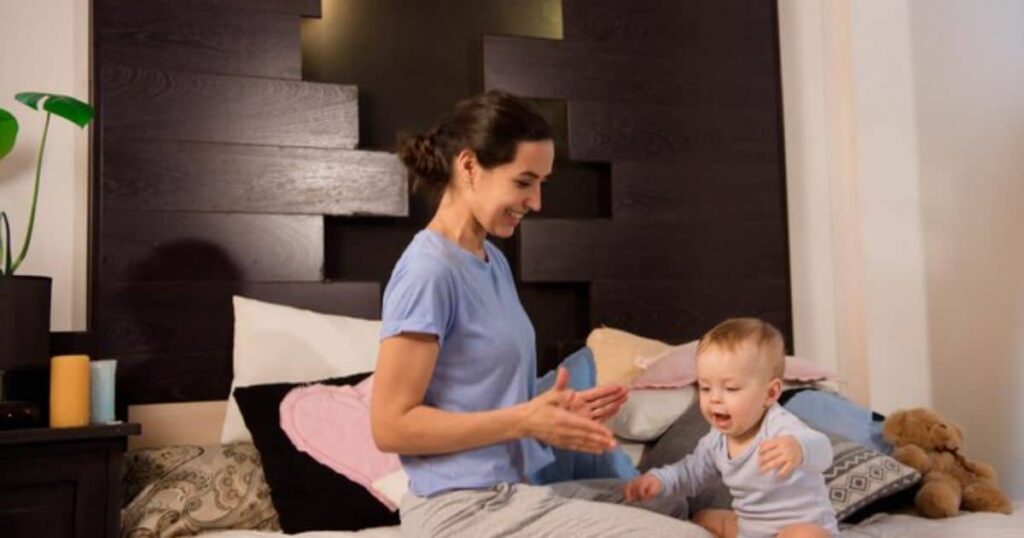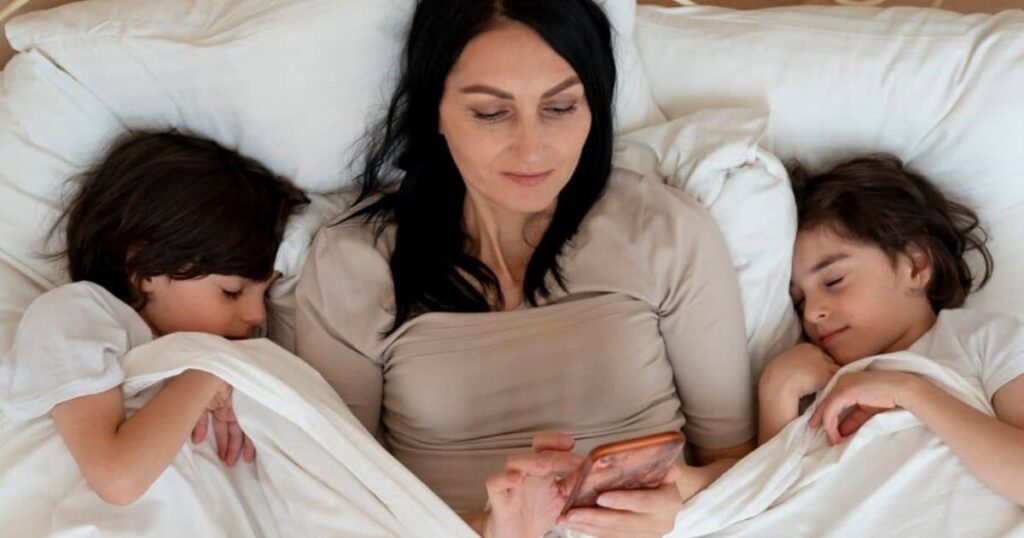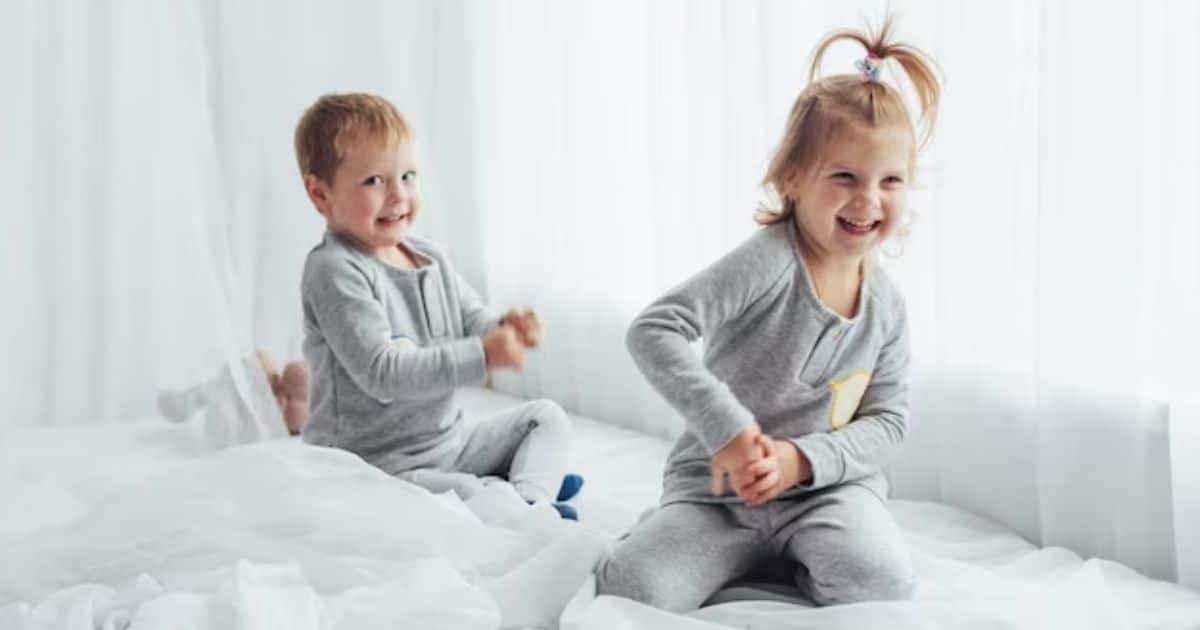Sleep training a 2-year-old after co-sleeping means teaching your child to sleep independently in their own bed. It’s the process of transitioning them from sleeping with you to sleeping alone. If you’re tired of sharing your bed and want to help your child develop healthy sleep habits, this guide is for you. It provides tips and techniques to make the transition smoother for both you and your child, so everyone can get a good night’s sleep.
Struggling to get your 2-year-old to sleep in their own bed after co-sleeping? Sleep training a 2-year-old after co-sleeping can be challenging but rewarding. This guide will help you reclaim your sleep space and establish healthy sleep habits for your child. Say goodbye to restless nights and hello to peaceful sleep for everyone.
Consistency is key when training a 2-year-old after co-sleeping. Establish a bedtime routine and set clear boundaries. Gradually transition from co-sleeping to independent sleeping using techniques like the gradual retreat or fading method. Be patient and understanding as your child adjusts to the new sleeping arrangement. With consistency, support, and patience, you can guide your 2-year-old towards healthy sleep habits and a restful night’s sleep.
Why you should sleep train your toddler

Sleep training your toddler is important for several reasons. It helps them develop essential sleep skills, establish a healthy sleep routine, and improves their behavior and mood. When toddlers learn to sleep independently, they become better at soothing themselves and experience better overall sleep quality.
This leads to increased alertness, better learning, and improved development during the day. Sleep training also benefits parents and the entire family by allowing everyone to have restful nights and regain their sleep routine.
It helps parents feel more energized, patient, and better equipped to handle the demands of parenting. Montessori sleep training is crucial for your toddler’s well-being, behavior, and the overall harmony of the family.
When to stop co-sleeping
Knowing when to stop co-sleeping with your child is an important decision. Around the age of 2 to 3 years old, it is generally recommended to start transitioning to independent sleeping. Look for signs that your child is ready, such as showing interest in their own bed and being able to fall asleep on their own.
Every child is different, so approach the transition with patience and support. Gradually introduce independent sleeping and establish a consistent bedtime routine. The goal is to promote healthy sleep habits and ensure that everyone gets the restful sleep they need.
psychological effects of co sleeping

- Attachment and bonding: Co-sleeping can promote a strong emotional bond between parent and child, fostering a sense of security and closeness.
- Sleep dependency: Co-sleeping can create a dependency on parental presence for falling asleep, potentially leading to difficulties in self-soothing and independent sleep.
- Sleep disruptions: Co-sleeping can result in disrupted sleep patterns for both the child and the parents, leading to potential sleep deprivation and daytime tiredness.
- Separation anxiety: Co-sleeping may contribute to increased separation anxiety in children when they are eventually transitioned to sleeping alone.
- Autonomy development: Co-sleeping may impact a child’s sense of autonomy and independence, as they may rely heavily on parental presence during sleep.
- Cultural and societal factors: The psychological effects of co-sleeping can vary across different cultures and societies, as co-sleeping practices are influenced by cultural norms and beliefs.
- Individual differences: Each child may respond differently to co-sleeping, and the psychological effects can vary based on their temperament, personality, and unique circumstances.
What Do Experts Say About Co-Sleeping?
Experts have different opinions about co-sleeping. Some say sleep training a 2-year-old after co-sleeping is beneficial for developing healthy sleep habits. They recommend a consistent bedtime routine and gradual transition to independent sleep. Others believe co-sleeping can create dependence and suggest sleep training to promote self-soothing and independent sleep.
Remember, every child and family is unique, so it’s best to consult with a pediatrician or sleep specialist for personalized guidance. They can help you make an informed decision and establish healthy sleep habits for your child.
Tips and best practices to help with the transition from co-sleeping to crib

Making the transition from co-sleeping to crib can be a significant change for both parents and their child. With some helpful tips and best practices, this transition can be smoother and more successful.
Preparing the Bedroom:
Creating a cozy and safe space for your child is the first step in transitioning from co-sleeping to the crib. Choose a comfortable mattress and soft bedding. Place your baby’s favorite stuffed animals or blankets in the crib to make it feel familiar. Use a nightlight to add a gentle glow that helps your child feel secure during the night.
Establishing a Bedtime Routine:
Developing a consistent bedtime routine can make the transition smoother. Read a bedtime story or sing a lullaby to signal that it’s time for sleep. This routine helps your child understand when it’s time to go to bed and creates a comforting pattern they can rely on.
Gradual Transition:
It’s essential to introduce the crib gradually. Start by having your baby take naps in the crib during the day. This allows them to get used to the new sleeping arrangement in a familiar environment. As your child becomes more comfortable, gradually transition to nighttime sleep in the crib. This step-by-step approach helps ease the adjustment.
Positive Reinforcement:
Encourage your child to feel excited about sleeping in their crib. Offer praise and rewards when they sleep well in their own space. Create a reward chart and let them place a sticker every time they have a successful night in the crib. Positive reinforcement helps make the transition a positive and rewarding experience for your little one.
Transitioning from co-sleeping to the crib is a big step for your child, and with these tips, the process can be smooth and comforting. By preparing a cozy sleeping environment, establishing a bedtime routine, introducing the crib gradually, and providing positive reinforcement, you can help your child feel secure and confident in their new sleeping arrangement. Remember, patience and consistency are key as your child adjusts to this important transition.
FAQ’s
Is it too late to sleep train a 2 year old?
No, it’s not too late to sleep train a 2-year-old. With consistency and patience, you can establish healthy sleep habits and improve their sleep routine.
How do I transition my toddler from cosleeping to a bed?
Gradually transition by placing a toddler bed in your room, then move it to their own room. Establish a consistent bedtime routine for comfort and familiarity.
What are the psychological effects of child sleeping with parents?
Child co-sleeping may foster a sense of security but, in some cases, it can lead to dependency issues and hinder the development of independent sleep habits, potentially impacting the child’s psychological well-being.
Why do children sleep better in parents bed?
Children may feel more secure and comforted in their parents’ bed due to the close physical proximity and a sense of safety, often resulting in better sleep.It’s essential to establish independent sleep habits for long-term healthy sleep patterns.
What is the difference between co-sleeping and sleep training?
Co-sleeping involves sharing a bed with the child, while sleep training using pillow is the process of teaching a child to sleep independently in their own space, often a crib or bed.
Conclusion
Sleep training your toddler is vital for their overall well-being, fostering essential sleep skills and establishing a positive routine that enhances mood and behavior. This not only benefits the child but contributes to family harmony by providing restful nights and allowing parents to navigate their roles with renewed energy and patience.
When transitioning from co-sleeping around the age of 2 to 3, careful observation of your child’s readiness and a gradual approach can ensure a smooth adjustment to independent sleeping. Understanding the psychological effects of co-sleeping, seeking expert opinions, and following practical tips for transitioning to the crib all contribute to creating a positive and supportive sleep environment for both child and family.










